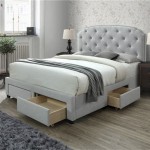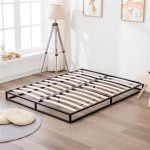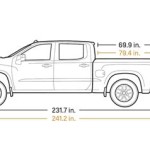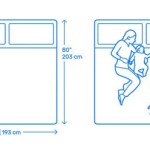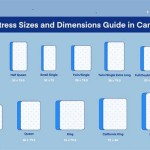Are Full and Queen Beds the Same Size? A Comprehensive Comparison
The selection of a bed often involves navigating a range of sizes, each designed to accommodate diverse needs and spatial constraints. Among the more popular options are full and queen-sized beds. While both offer more sleeping space than a twin bed, prospective buyers frequently inquire about the degree of similarity between these two sizes. This article provides a detailed exploration of the dimensions, suitability, and common applications of both full and queen beds, aiming to clarify their distinct characteristics.
Understanding the precise measurements of a bed is paramount for several reasons. It directly affects sleeping comfort, particularly for individuals sharing the bed. It also dictates whether the bed will fit comfortably within the available bedroom space, allowing for adequate room for movement and other furniture. Furthermore, the dimensions determine the appropriate size of bedding, such as sheets, comforters, and duvet covers, ensuring a proper fit and aesthetic appeal.
Key Point 1: Dimensional Differences Between Full and Queen Beds
The fundamental difference between full and queen beds lies in their dimensions. A full-size bed, also known as a double bed, typically measures 54 inches wide and 75 inches long. This translates to approximately 4.5 feet wide and 6.25 feet long. In contrast, a queen-size bed measures 60 inches wide and 80 inches long, equating to 5 feet wide and 6.67 feet long. These seemingly small differences in width and length translate into a significant increase in overall sleeping surface area.
Specifically, a queen bed provides 6 inches of additional width compared to a full bed. This extra width can be crucial for couples sharing the bed, providing each individual with more personal space and reducing the likelihood of disturbing their partner's sleep. The additional 5 inches in length is particularly beneficial for taller individuals, whose feet might otherwise hang off the edge of a full-size bed. This extra length contributes significantly to increased comfort and a more restful sleep experience.
To further quantify the difference, a full-size bed offers a total sleeping surface area of 4,050 square inches (54 inches x 75 inches). A queen-size bed provides a larger sleeping surface area of 4,800 square inches (60 inches x 80 inches). This represents an increase of 750 square inches, or approximately 19%, in sleeping surface area with the queen bed. This notable difference makes the queen bed a more comfortable option for couples and taller individuals seeking ample sleeping space.
Beyond the basic dimensions, it is also important to consider the frame surrounding the mattress. The frame's dimensions can vary depending on the design and style, potentially adding several inches to the overall footprint of the bed. Therefore, when planning the layout of a bedroom, it is advisable to account for the frame's dimensions in addition to the mattress size to ensure a proper fit and adequate space for movement.
The weight of the bed, including the mattress and frame, is another factor to consider. Queen-size beds, being larger, will generally weigh more than full-size beds. This can impact the ease of moving the bed during relocation or re-arranging the room. Furthermore, the weight capacity of the bed frame should be considered, especially for heavier individuals or couples, to ensure its structural integrity and longevity.
Key Point 2: Suitability for Different Users and Spaces
The selection between a full and queen bed significantly depends on the intended user and the size of the bedroom. Full-size beds are often suitable for single adults or teenagers, particularly in smaller bedrooms where space is limited. The compact dimensions of a full bed allow for more floor space for other furniture and activities. In guest rooms, a full bed can comfortably accommodate single guests or couples for short stays without overwhelming the room's layout.
However, for couples who prioritize sleeping comfort and have adequate bedroom space, a queen bed is generally the preferred choice. The additional width and length provide ample room for each partner to sleep without feeling cramped or restricted. Taller individuals, regardless of marital status, also benefit significantly from the extended length of a queen bed, preventing discomfort caused by feet hanging off the edge. Furthermore, the added sleeping space allows for more freedom of movement and reduces the likelihood of disturbing a sleeping partner.
In master bedrooms, a queen bed is a common standard due to its balance of sleeping comfort and space efficiency. While a king-size bed offers even more sleeping space, it may not be feasible in smaller master bedrooms. A queen bed provides a comfortable compromise, offering ample room for couples while still leaving enough space for other bedroom furniture, such as dressers, nightstands, and seating areas.
Consideration should also be given to the intended use of the bed. For instance, a guest room that is frequently used by couples might warrant a queen bed for enhanced guest satisfaction. Conversely, a spare bedroom primarily used by single guests or children could be adequately furnished with a full-size bed. The anticipated frequency of use and the typical occupants' preferences should guide the selection process.
Moreover, the individual's sleeping habits and preferences can influence the bed size selection. Individuals who tend to toss and turn frequently during sleep or prefer to sleep with ample personal space may benefit from the larger dimensions of a queen bed, even if they are single. Conversely, individuals who sleep relatively still and prefer a cozier sleeping environment may find a full-size bed sufficient.
Key Point 3: Bedding and Accessory Considerations
The choice between a full and queen bed also impacts the selection of bedding and accessories. While some bedding sets may be designed to fit both full and queen beds, they often do so with a compromise. Typically, these "full/queen" sets are sized closer to the queen dimensions, resulting in excess fabric on a full bed and a potentially less tailored appearance. Conversely, bedding specifically designed for full or queen beds will offer a more precise fit and aesthetic appeal.
Sheet sets, in particular, are designed with specific dimensions to accommodate the mattress size and depth. Using queen-size sheets on a full-size mattress can result in loose-fitting sheets that bunch up and become uncomfortable during sleep. Conversely, using full-size sheets on a queen mattress may result in sheets that are too tight and prone to slipping off the corners. Therefore, it is generally recommended to purchase sheet sets that are specifically sized for the bed's dimensions.
Comforters, duvet covers, and blankets also require careful consideration in terms of size. A comforter or duvet cover that is too small will not adequately cover the mattress and may leave the edges exposed, resulting in insufficient warmth and an unappealing aesthetic. Conversely, a comforter or duvet cover that is too large may overwhelm the bed and drape excessively onto the floor. The ideal size will adequately cover the mattress and provide a balanced and visually appealing appearance.
Furthermore, the selection of bed frames, headboards, and footboards should also correspond to the bed's size. Bed frames are typically designed to accommodate either full or queen mattresses, and using the wrong size frame can compromise the mattress's support and stability. Headboards and footboards are also sized accordingly to complement the width of the bed and contribute to the overall aesthetic design.
Pillows and decorative cushions can also be chosen to complement the bed size and overall bedroom decor. Larger beds, such as queen beds, can accommodate more pillows and decorative cushions without appearing cluttered. Smaller beds, such as full beds, may benefit from a more minimalist approach to pillow selection to avoid overwhelming the bed's smaller surface area.
The cost of bedding and accessories also varies depending on the size. Queen-size bedding and accessories generally cost more than full-size equivalents due to the increased amount of materials required for manufacturing. This cost difference should be factored into the overall budget when choosing between a full and queen bed, as bedding and accessories represent a significant ongoing expense.

Full Vs Queen Size Bed 2024 Mattress Nerd

Full Vs Queen Mattress In Depth Comparison Guide Sleep Advisor

Full Vs Queen Size Mattress What Is The Difference Nectar Sleep

Official Full Vs Queen Mattress Comparison Puffy

A Detailed Guide On Full Vs Queen Size Mattresses Which One Should You Sleep Turmerry

Full Vs Queen Bed Size What S The Difference

Twin Vs Full Queen Which Mattress Size Is Right For You Dreamcloud

Mattress Sizes Chart And Bed Dimensions Guide Amerisleep

The Ultimate Mattress Size Chart And Bed Dimensions Guide Sleep Advisor

Full Vs Queen Size Mattress What Is The Difference Dreamcloud

